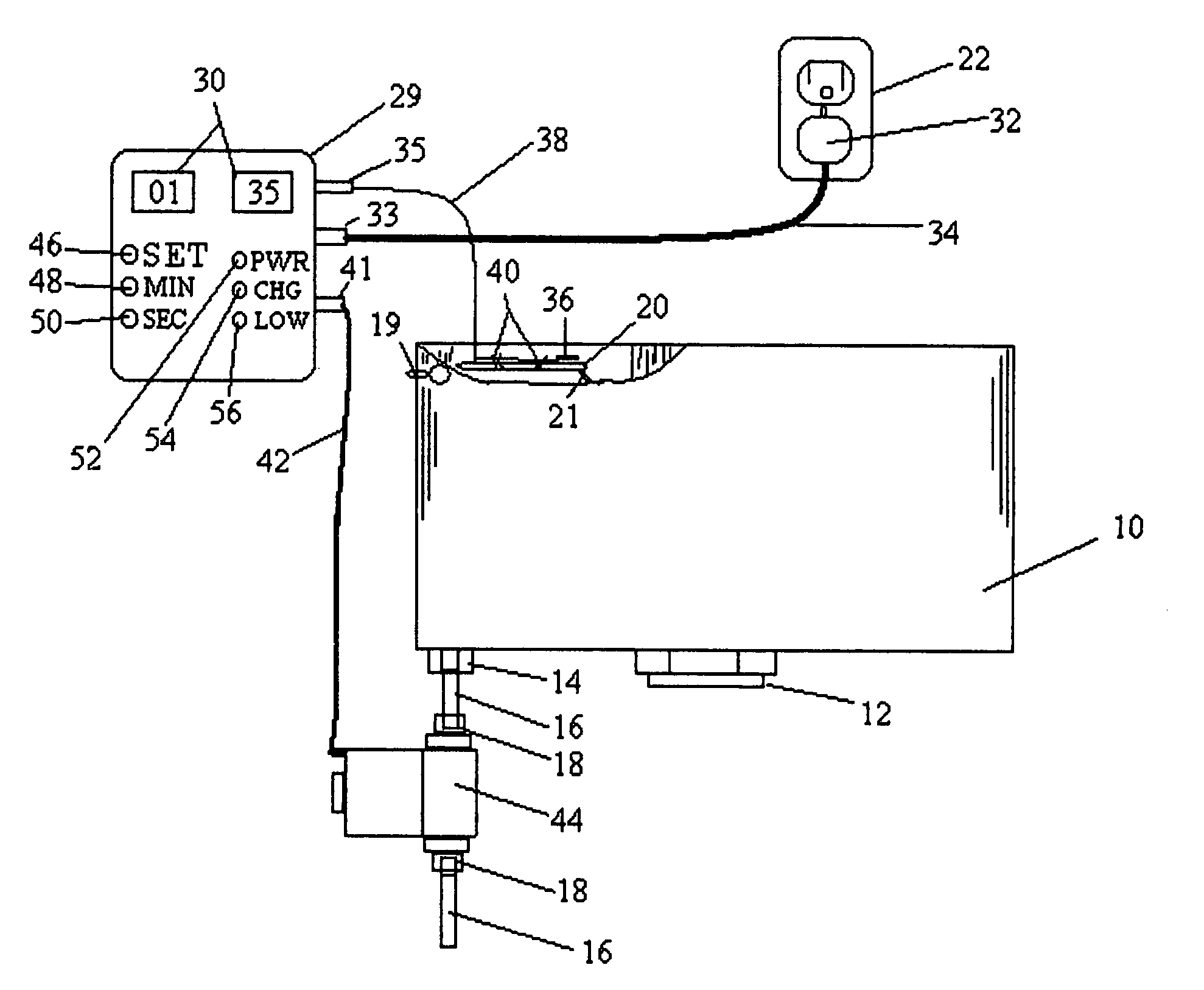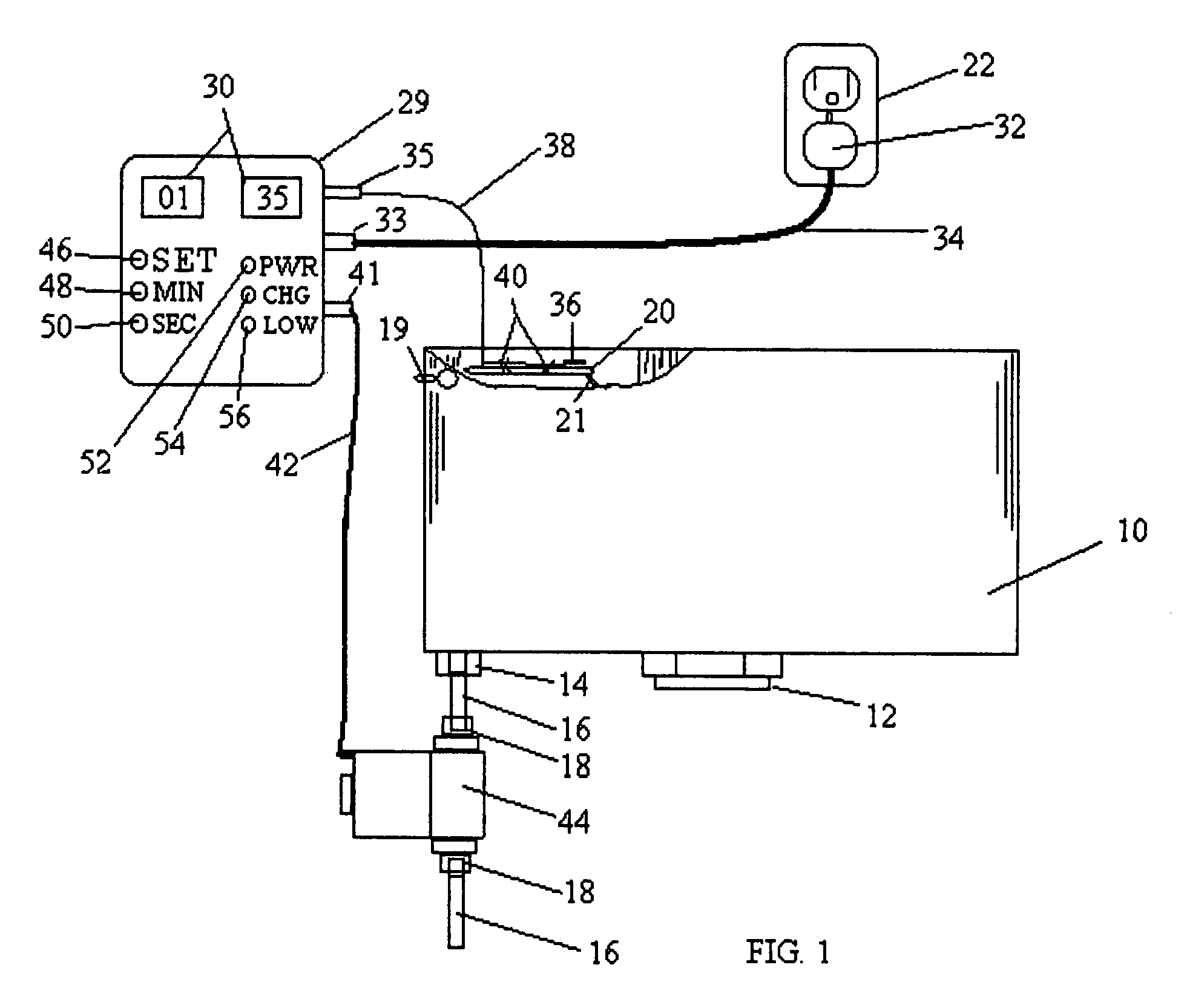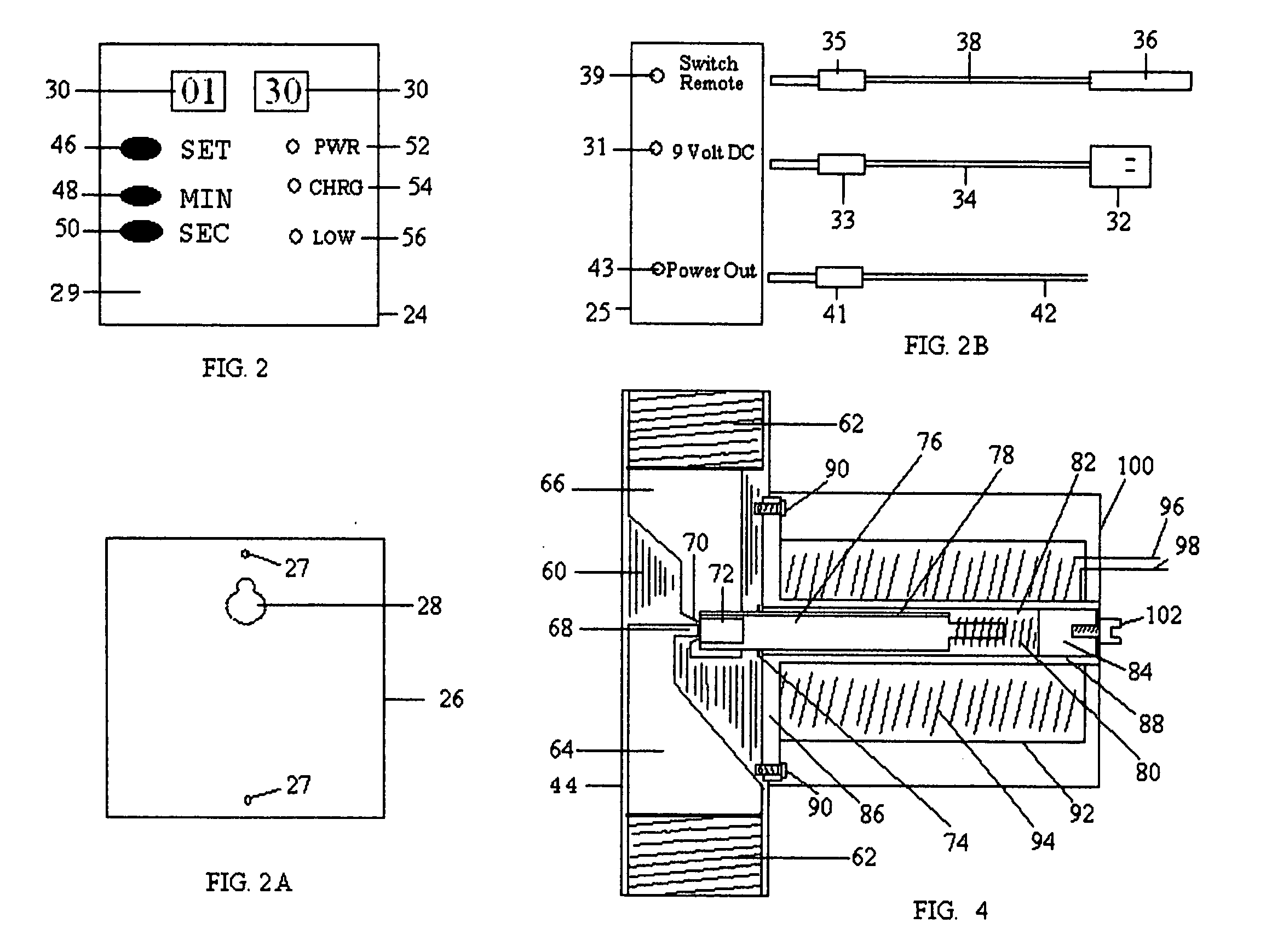"Countdown Timer" automatic water limiting supply shut off safety valve flo-control system
a technology of automatic water limiting supply and safety valve, which is applied in the direction of valve operating means/releasing devices, mechanical equipment, transportation and packaging, etc., can solve the problems of many external moving parts subject to mechanical failure, waste of water, and overflow, and achieves the effect of preventing siphon and backflow, cost-effective, and easy installation
- Summary
- Abstract
- Description
- Claims
- Application Information
AI Technical Summary
Problems solved by technology
Method used
Image
Examples
Embodiment Construction
[0040] The following description is provided to enable any person skilled in the art to make and use the invention and sets forth the best modes contemplated by the inventor for those so skilled to do so.
[0041]FIG. 1 is a front view of a conventional toilet tank 10, of the type universally found in most homes in the United States and North America, which is fitted with a Countdown Timer 29, and a Solenoid Safety Valve 44, in accordance with the present invention. In the conventional home toilet, a ball cock assembly comprising a float arm, and float ball is mounted at the upper end of a water tube for closing an inlet valve via a mechanical linkage when the tank is filled to a predetermined level. In the present invention a float valve assembly is left unchanged being mounted to the tank in its usual fashion.
[0042] The illustrated toilet tank comprises a toilet tank 10 with a float valve inlet 14, extending through the left rear bottom of the tank 10. Water supply is introduced by...
PUM
 Login to View More
Login to View More Abstract
Description
Claims
Application Information
 Login to View More
Login to View More - R&D
- Intellectual Property
- Life Sciences
- Materials
- Tech Scout
- Unparalleled Data Quality
- Higher Quality Content
- 60% Fewer Hallucinations
Browse by: Latest US Patents, China's latest patents, Technical Efficacy Thesaurus, Application Domain, Technology Topic, Popular Technical Reports.
© 2025 PatSnap. All rights reserved.Legal|Privacy policy|Modern Slavery Act Transparency Statement|Sitemap|About US| Contact US: help@patsnap.com



